Long and narrow are two words that spring to mind when you think of Chile. Located along South America’s western edge, the Pacific follows the country down more than 6,000 kilometres of coastline.
We entered Chile overland from Bolivia after two fabulous nights touring the Uyuni Salt Flats. A land of varied climates and natural events, we thoroughly enjoyed our two weeks exploring the slender country of expansive desert, bustling cities and wine regions.
Our first stop? The Atacama Desert; a magical spot. From there, we made our way across to the coast, then downwards.
The eclectic scenery was one of the main things we loved about Chile – from biking through the Moon Valley and gazing up at the night sky in Vicuña to taking a local bus to the gloriously green Elqui Valley and the land of pisco.
As with the rest of our travels through South America, we got about by road, mostly using buses – they’re more like what we’d describe as coaches. Comfy, affordable and with reclining seats and air-con, they served us well. We mostly used Turbus and Pullman, with some offering a breakfast bag for overnight journeys.
Right, time to jump into our Chilean escapades.
After a tour-laden time in Bolivia, we were ready for a slightly more chilled time in Chile. We managed that balance well – still seeing tons and doing some excursions, but fewer multi-dayers.
Hot sunny days, sandy beaches, vibrant street art, beautiful landscapes and the opportunity to sample wine and an array of pisco sours describe our two weeks.
It’s also worth mentioning that we travelled to Chile in high season (December), bumping hotel costs up. Consider shoulder season (late September-November and March-May) as an alternative.
Same as my Bolivia budget guide, I’ll reference costs in US dollars (or the native currency), because most readers are from the States. The Chilean Peso (CLP) is the native currency – at the time of writing this, 1 USD is just under 900 CLPs.
And as always, just to confirm, I paid for everything myself, making this a comp- and press-free budget guide.
What’s Included in This Post
What does the budget breakdown you’re about to read cover? Places to stay, transportation, things to do, food, and miscellaneous costs.
Our time in Chile was fun yet relaxing, filled with an array of activities as well as downtime. We left wanting more which can only be a good sign. Continue reading for more details.
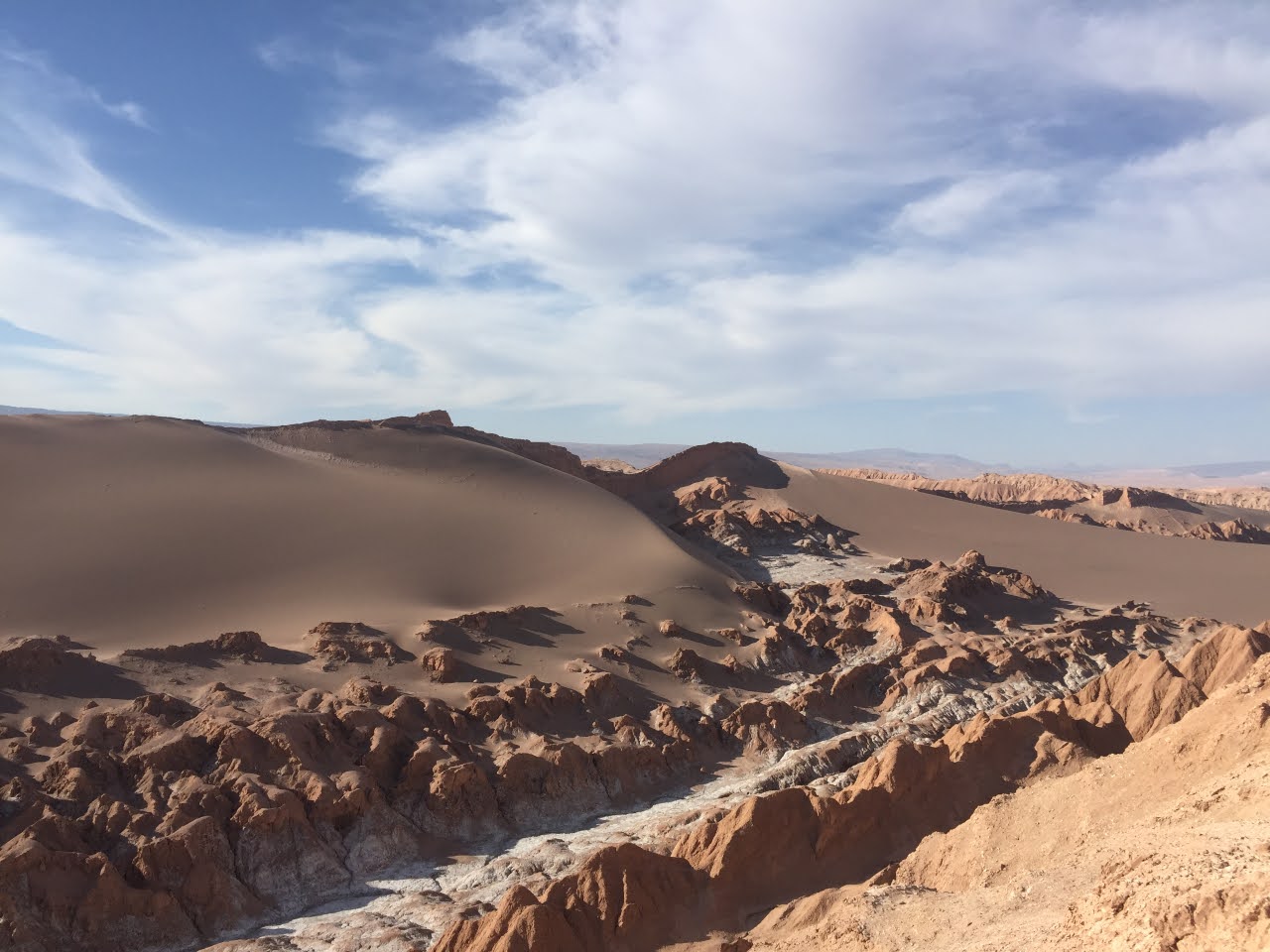
How to Save Money on the Cost of Accommodation in Chile
As always with travel, it’s possible to cut your accommodation costs down to zero if you have the time and patience to seek out an offer.
Housesitting is a great option for free accommodation. This is where you’ll take care of somebody’s house while they’re away, and usually look after their pets, too. It’s best for long-term travellers or retirees as you can’t pick and choose dates and destinations, so you need to have a lot of flexibility as to where you go and at what time of year. If you do have that freedom, it’s a wonderful way to cut down your travel expenses, soak up some home comforts, and live like a local for a while. I have friends who have housesat in castles before! For free! Trusted Housesitters is the best site for getting started with housesitting, as they have the highest number of listings.
I’m suspecting, though, that for most of you, you’re not interested in the free accommodation and just want somewhere clean, safe, and affordable to rest your head each night. If that’s the case, there are several options available for you.
And, of course, there are always hotels, which will usually come in at around $40-$100 a night for a decent, clean, mid-range property in a central location. I always use Booking, as they have the most accommodation options for the cheapest prices.
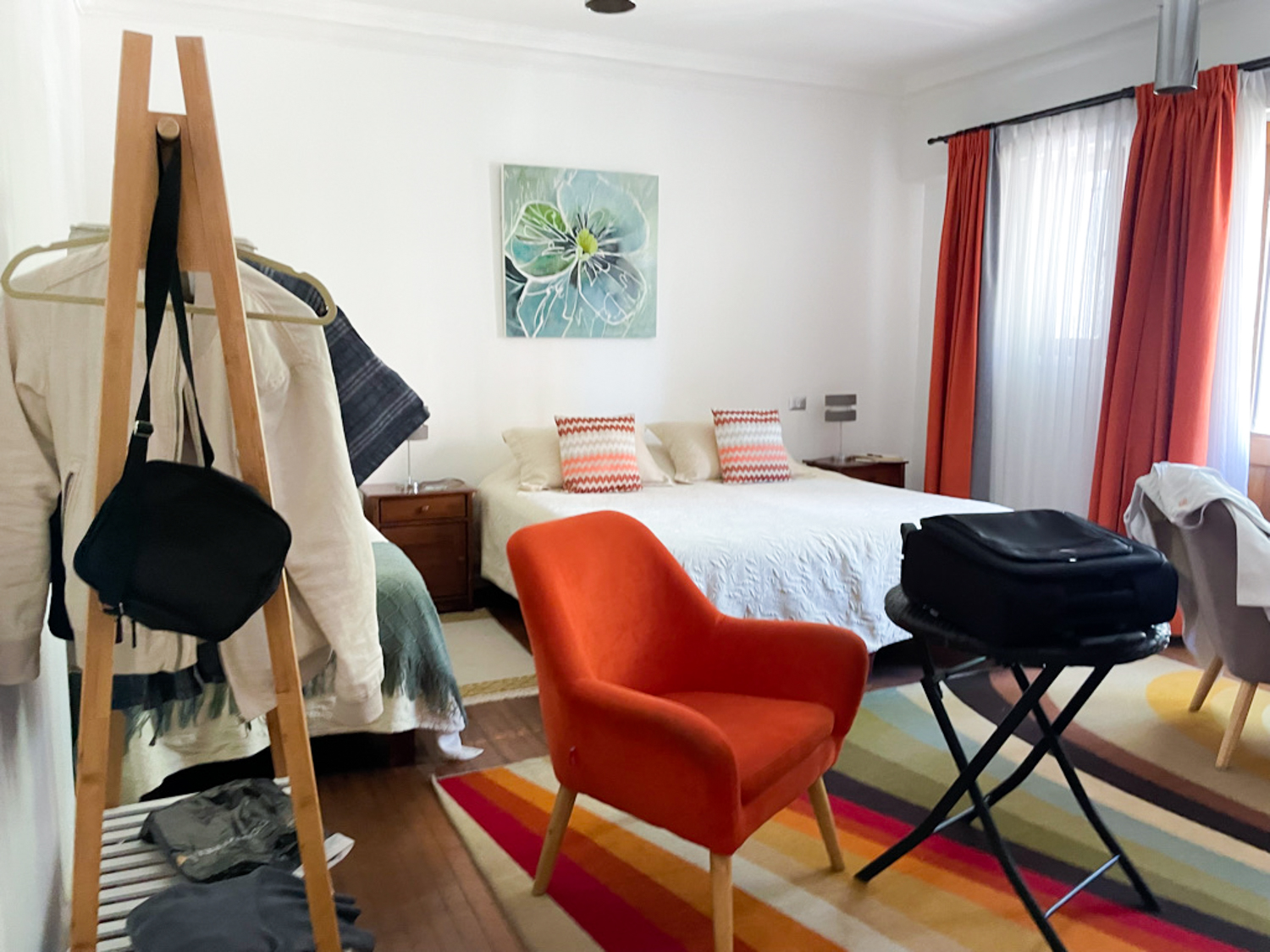
The Cost of Accommodation in Chile
As always, researching accommodation options paid off. Getting online and reading reviews served us well throughout our travels. We found some fab places to stay in Chile, from hotels and boutique hostels to cabanas. A tasty breakfast was included for the most part (always a bonus). Or, there was a kitchen for us to cheaply prepare our own.
So, here’s where we stayed in Chile:
Santiago: Safety in Santiago has, unfortunately, decreased post-protests-and-pandemic, so there aren’t as many neighbourhoods I’d recommend staying in. Providencia, however? It’s an oasis of safety and serenity — and I absolutely adored the guesthouse I chose to stay in. Casa La Barca is a wonderful property, with friendly staff, comfortable rooms, a gorgeous terrace, and one of the best breakfasts I had in the country. Located just a 10-minute walk from Barrio Italia, it was in a great location for exploring the city.
Valparaiso: We stayed at this contemporary Cerro Alegre apartment hotel with mountain views, a striking glass frontage, wood flooring, and a dinky balcony for admiring said vistas. Our super roomy space had a kitchen, sitting areas and high ceilings for a light and airy feel – we felt spoilt. Even more so when a first-rate breakfast was delivered to our room each morning. Centrally located a five-minute amble from Cerro Concepcion and with a host giving excellent restaurant recommendations, this was a real find.
San Pedro de Atacama: Located just a 10-minute walk from the centre of town and main plaza, this comfy and stylish hostel felt more like a guest house. Our spacious, colourful room was $71 per night and had a little sitting area, plus a table and chairs outside in the courtyard where we enjoyed a bottle of wine in the evening sun. An ample buffet breakfast, friendly staff, and free bikes rounded the picture off. The town of San Pedro de Atacama had a real tourist vibe to it, with terracotta buildings and mostly pedestrianised narrow roads. The varied surrounding landscape of desert, geysers, salt flats, volcanoes, and hot springs offered tours aplenty.
La Serena: This rustic colonial spot just a three-minute stroll from Plaza de Armas was coincidentally also $71 a night, and well worth it. A top breakfast buffet was included, our room was spotless, and amicable staff were on hand to answer questions. The stylishly decorated space featured wood floors, an outside area with garden and courtyard views, and a communal kitchen. We were just a half an hour walk from the beach and promenade, too. La Serena itself may not have had loads to offer in terms of things to do, but it was an excellent base for a trip to Mamalluca Observatory and Elqui. After a day trip one day to the latter, we changed our plans slightly and decided to go back and stay for a few nights to chill in the scenic valley.
Elqui Valley: We upped our budget to $91 a night for this peaceful lodge with a pool on the outskirts of Pisco Elqui. Charming, and again with lovely staff (there seems to be a theme), we were surrounded by lush greenery, mountain vistas and nature. This was our time to kick back, forget about wifi (it was patchy) and recharge. Offering a grocery delivery service, we were able to cook meals in our kitchen and didn’t need to leave the remote spot. Our spacious wooden chalet also boasted an alfresco terrace and a wood burner back indoors – not that we needed that.
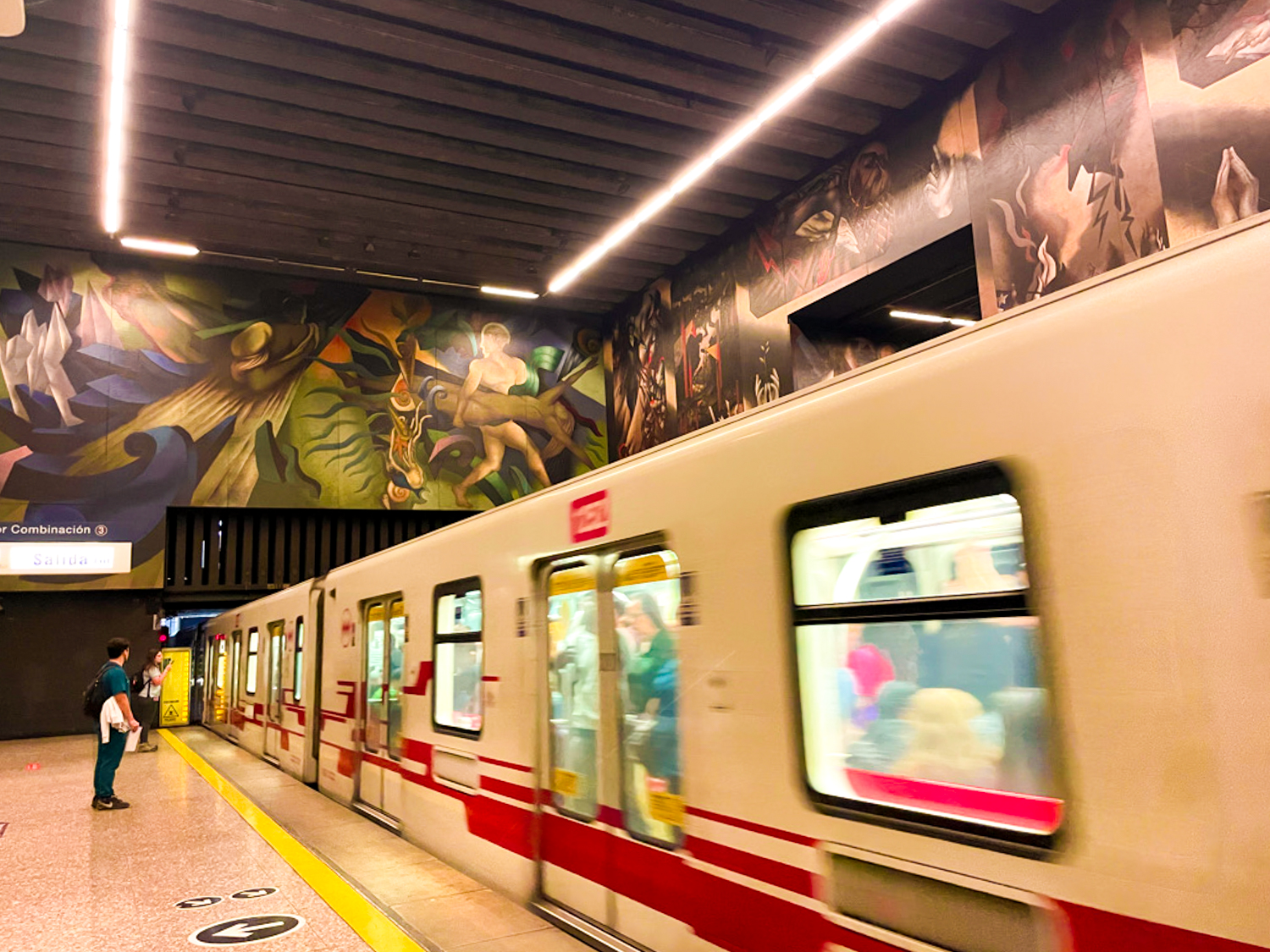
The Cost of Transportation in Chile
Generally, we got a rough idea of prices by searching online, and then went directly to the bus terminal a day or two in advance to purchase tickets. More often than not they were cheaper there.
We found travelling by bus easy, comfortable and super affordable – we’d definitely recommend.
Our journey breakdown goes like this:
- Overnight bus from San Pedro de Atacama to La Serena: 15,750 CLP / $20 per person
- Local (micro) bus from Coquimbo to La Serena: 500 CLP / $0.67 per person
- Return local bus from La Serena to Pisco Elqui x2: 12,000 CLP / $16 per person. The reason we did that return journey twice: once for the day trip and again when we stayed in the valley. We got ourselves back to La Serena as that was easier for onward travel to Valparaiso.
- Bus from La Serena to Valparaiso: 9,000 CLP / $12 per person
- Return local (micro) bus from Valparaiso to Viña del Mar: 1,500 CLP / $2 per person
- Bus from Valparaiso to Santiago: 2,250 CLP / $3 per person
OUR TOTAL COST OF TRANSPORTATION IN CHILE CAME TO $107.34. THAT’S AN AVERAGE OF $8.26 PER DAY, OR $4.15 EACH.
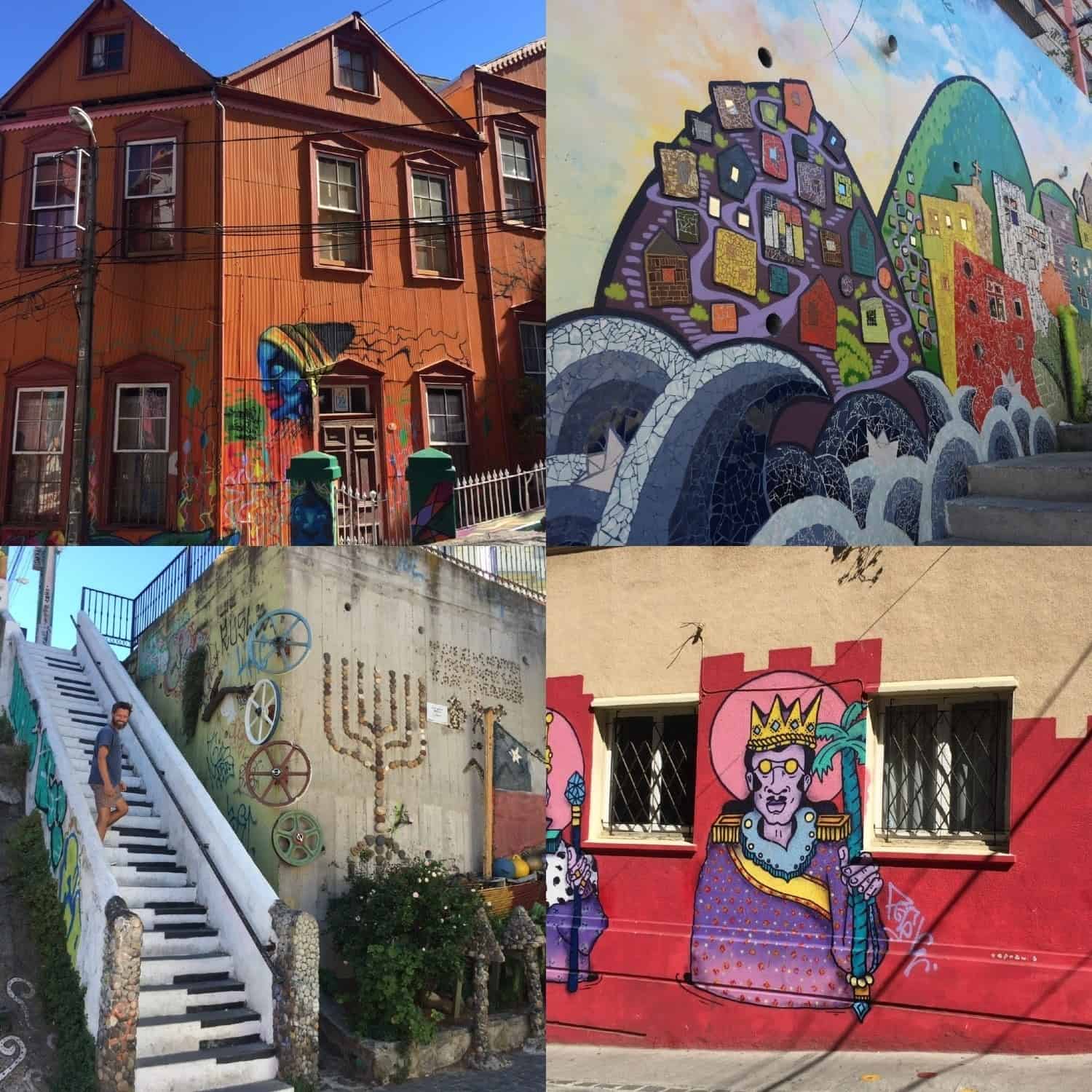
THE COST OF ACTIVITIES AND ENTRANCE FEES IN CHILE
Desert, wine regions, starry skies, verdant valleys and the towering Andes – what an amazing mixture of landscapes. Each place we went, we enjoyed some fantastic activities, from relaxing to energetic.
Carry on reading for a rundown:
Valle de Luna (Moon Valley) entrance fee, San Pedro de Atacama: 3,000 CLP / $4 per person. We used the free cycles from our hostel to bike out and self-guide to this otherworldly landscape of dunes, salt caves, craggy mountains and distinctive rock formations. We took a packed lunch and spent the day there, admiring the spectacular scenery. Tip: if you stay for sunset (which we did), be sure to leave before it gets dark (or make sure you have proper bike lights). We left it a bit late: there was no road lighting, which made for a slightly hairy ride back.
Pisco Mistral Distillery tour, Elqui Valley: 6,500 CLP / $8.50 per person. A picturesque place, super interesting, with tastings. If you fancy pushing the boat out a bit, the garden was a pretty spot for lunch or a drink.
Mamalluca Observatory night tour, La Serena: 25,000 CLP / $33.33 per person. This included transport to and from La Serena and a guided observation. We spend an incredibly interesting few hours looking up at stars and planets. And, we got to take home amazing pics of the moon, taken from my iPhone up against the lens of the telescope. We’d planned a stargazing tour in San Pedro de Atacama, but unusually, the night we were due to go was cloudy, so it didn’t go ahead. We were so pleased we got another chance.
Museum of Memory and Human Rights, Santiago: 2,000 CLP / $2.50 per person for an English audio guide (recommended). Entrance was free. An enlightening and harrowing insight into Pinochet’s 17-year rule.
Teleférico to San Cristóbal, Santiago: 2,850 CLP / $4 per person return (more on weekends). Enjoy fab views of downtown Santiago from this vantage point.
The Little Wine Bus Maipo Valley tour, Santiago: $97 per person. A fun and affordable way to see the wine region, with a guide, breakfast, lunch, plenty of wine and return transport. Perhaps not for serious wine connoisseurs, but nevertheless an excellent day.
And don’t forget these free activities, too:
Walking along the beach at La Serena to the small beach town of Coquimbo. Keep an eye out for the sea lions – we saw a huge one. The walk was quite long (around 2 hours), so we bussed it back.
Beach chill time at Viña del Mar (a short bus ride from Valparaiso).
Wander the hilly streets of Valparaiso taking in the varied street art. We loved exploring the steep walkways and hilltop viewpoints.
OUR TOTAL COST OF ACTIVITIES IN CHILE CAME TO $298.67. THAT’S AN AVERAGE OF $22.98 PER DAY, OR $11.49 EACH.
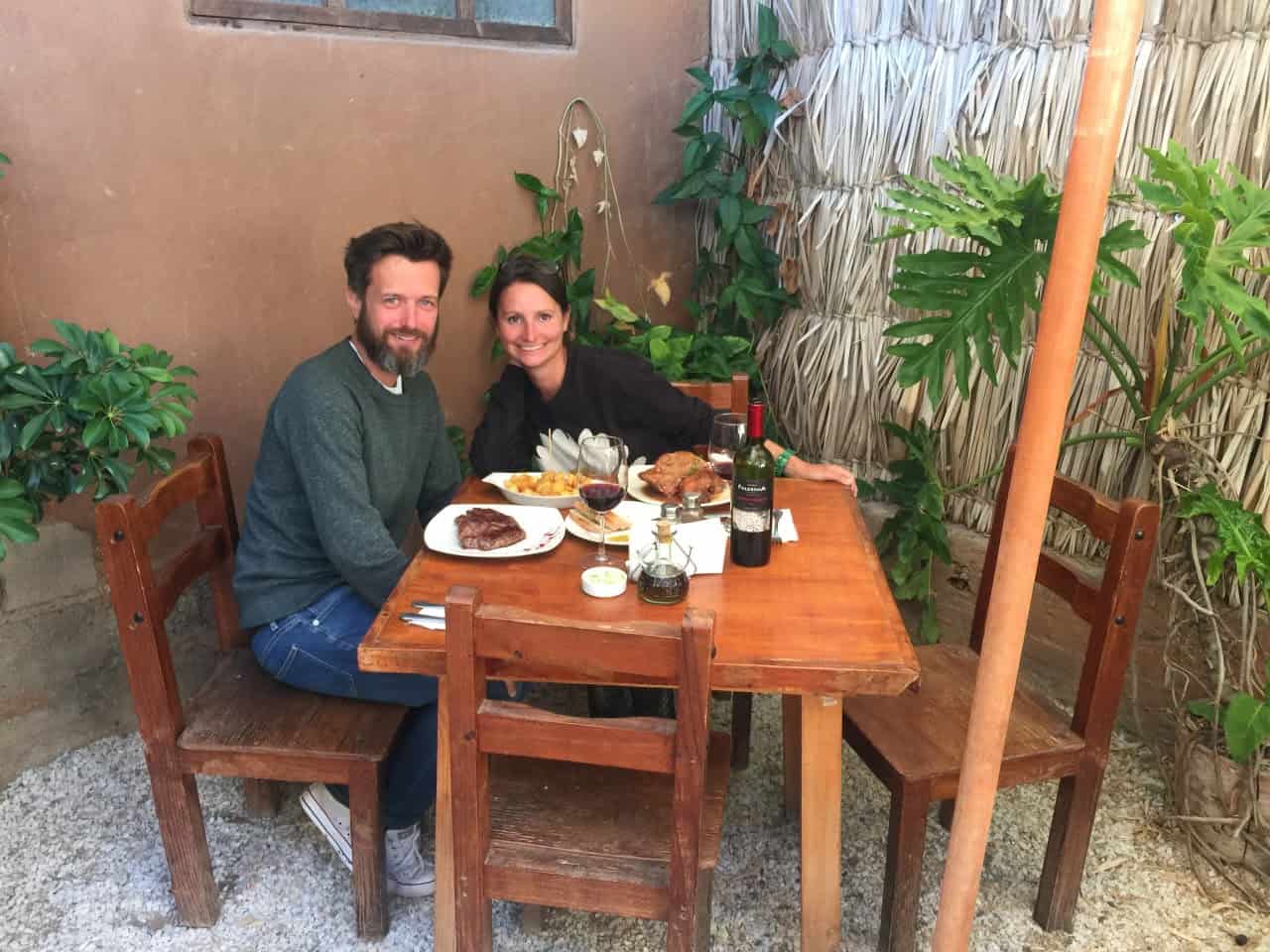
THE COST OF FOOD IN CHILE
With excellent breakfasts included at most places we stayed or else a communal kitchen for whipping something up, we spent virtually nothing on the first meal of the day.
Food lovers that we are, we don’t go anywhere without trying regional dishes. Two we devoured time and again in Chile for lunch were:
Completo hot dog: Spanish for complete or total, these were sold everywhere, from street food vendors to bars. Definitely not the most healthy, but filling and budget-friendly ($2-3), they were loaded with smashed avocado, onion, diced tomato, sauerkraut, and tons of mayo. Almost too much – and I’m a mayonnaise fan. There was also an Italiano version without the sauerkraut and onion. Messy but tasty.
Empanadas: We love a filled pastry snack, so we were in our element. Fillings ranged from ‘pino’ (minced beef, onion, raisins, hard-boiled egg and olives) and cheese to prawn. Prices varied quite a bit, from $0.75 to $2.50. Yummy and satisfying.
We sometimes ate these for dinner, too. Otherwise, something local at a casual eatery. Fish was big in Chile, with dishes such as seafood soup (sopa de mariscos) very popular. We typically spent $5-$10 per person on dinner.
Average daily food cost: $11.69 per day, or $5.85 each
Drinks:
We drank plenty of water and beer, sampled some Chilean wine and had plenty of piscos sours! The Chilean variety differed from the Peruvian version – no egg white was used. My fave was a pineapple version in the Elqui Valley at El Durmiente Elquino.
Litre bottles of aqua were around a dollar, beers were $2-3 a pop (cheaper if we bought them from a supermarket), pisco sours ranged from $4-$6, and wine very much varied depending on where we bought it.
Must-try? Dive bar La Piojera in Santiago, where we’d read about an interesting-sounding drink called Terremoto (earthquake). At 3,000 CLP ($4) each, it consisted of fermented sweet white wine called Pipeño, pineapple ice-cream, and either grenadine or fernet (a herbal, aromatic spirit). An interesting combo to say the least. The bar had a great atmosphere, we chatted to locals, and left a few sheets to the wind.
Average daily drink cost: $18 per day, or $9.00 each
OUR TOTAL COST OF FOOD AND DRINK IN CHILE CAME TO $173. THAT’S AN AVERAGE OF $29.69 PER DAY, OR $14.86 EACH.
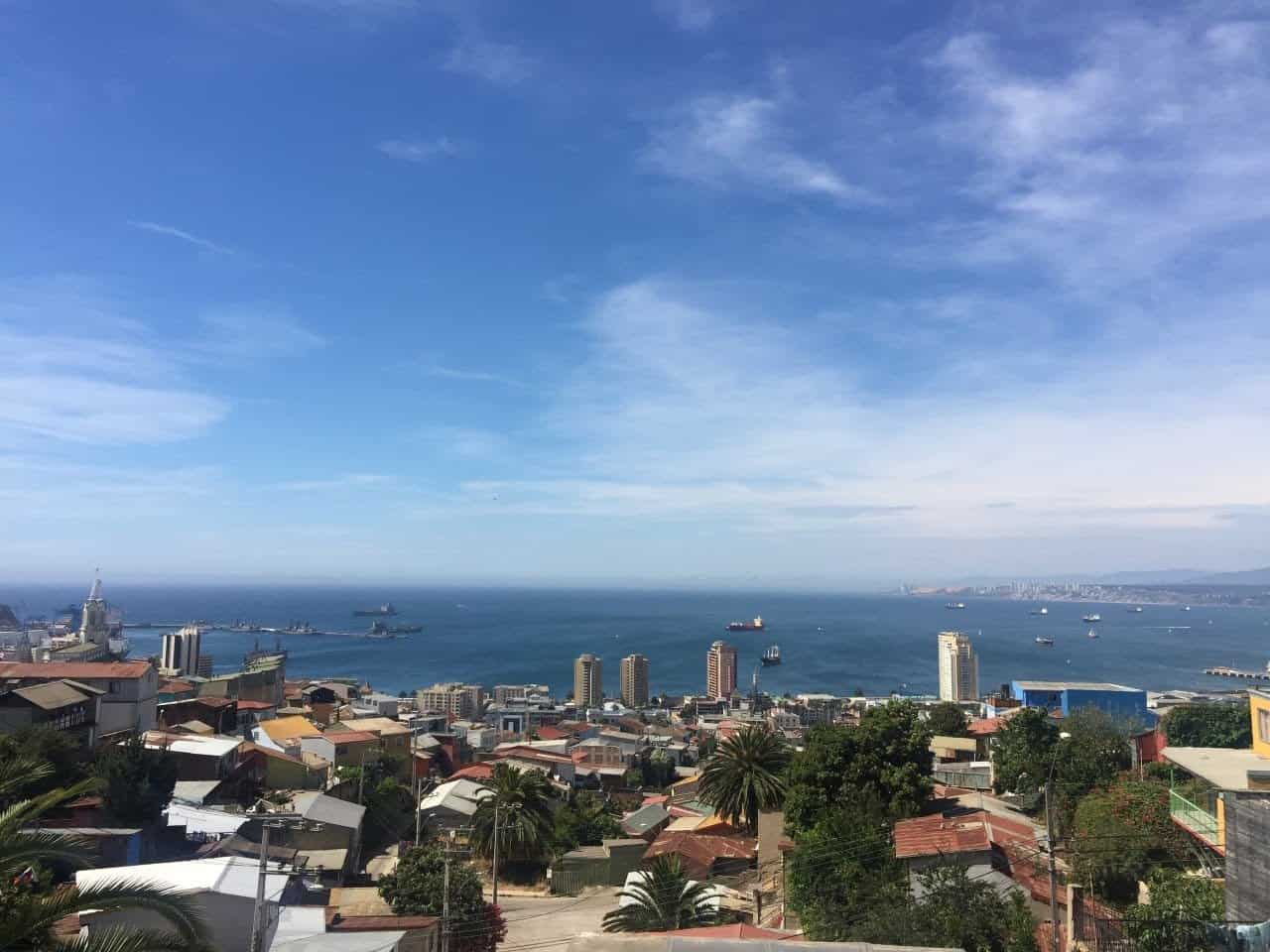
The Importance of Travel Insurance in Chile
And finally, I’m a firm believer that if you can’t afford travel insurance, you can’t afford to travel, and this holds true for every country in the world.
Travel insurance will offer compensation if your flight gets cancelled, pay for you to replace your lost luggage, cover your medical bills if you get break a leg while hiking in Patagonia, and ensure you don’t face any emergency travel costs to get back home for a family emergency. Nobody likes to think about things going wrong on their trips, but travel insurance is a must in order to ensure you’re not out tens of thousands of dollars if the worst case scenario comes true.
I use and recommend SafetyWing travel insurance for visitors to Chile. Firstly, they’re one of the few companies out there who will actually cover you if you contract COVID-19. On top of that, they provide worldwide coverage, don’t require you to have a return ticket, and even allow you to buy coverage after you’ve left home. If you’re on a long-term trip, you can pay monthly instead of up-front, and can cancel at any time. Finally, they’re cheaper than the competition, and have a clear, easy-to-understand pricing structure, which is always appreciated.
For a two weeker in Chile, you’ll spend $1.50 a day on insurance.
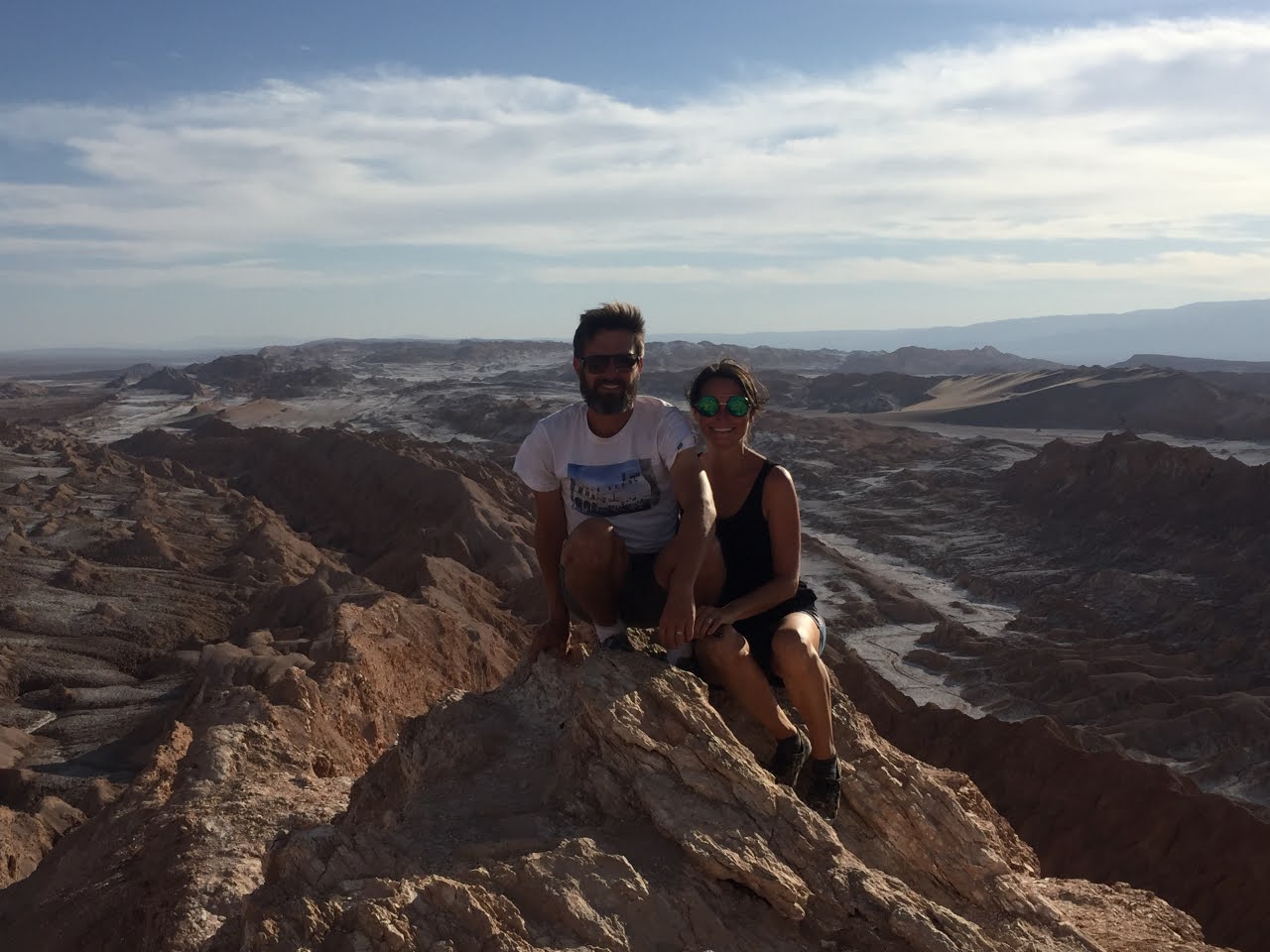
HOW MUCH DOES IT COST TO TRAVEL IN CHILE?
Our daily spends per person:
- Accommodation: $39.60 per day
- Transport: $4.15 per day
- Activities: $11.49 per day
- Food and drink: $14.86 per day
- Miscellaneous: $1.50 per day
Grand total spent in Chile: $71.60 per person per day.
As we left the capital city of Santiago and headed east on a scenic bus journey into Argentina, we added Chile to our list of countries to revisit. The scenery we experienced was spectacular, and we knew there was still more to see…

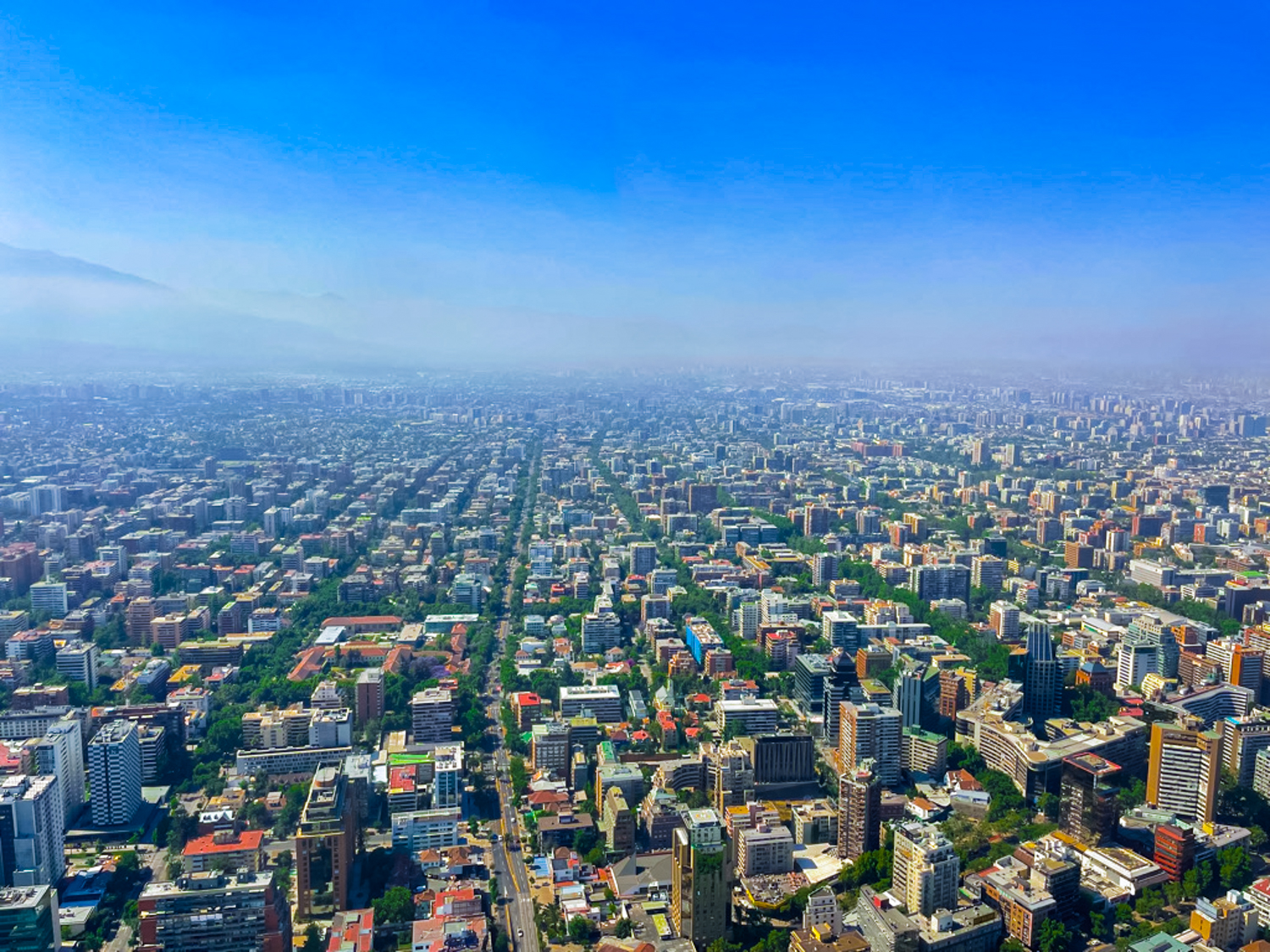


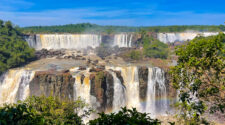


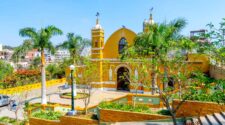
Awesome guide. Hopefully planning on seeing Chile soon.. thought it might cost too much, as it has a reputation for being the most expensive place in Latin America, but it doesn’t seem so bad from your figures.
Thanks for this incredibly useful article! I am planning my next adventure to Argentina, Chile, and Peru and your breakdowns have been so helpful. You need to put one together for Argentina! Anyway, I was wondering how difficult it is to get to the southern reaches of Chile? Obviously we could fly there, but that would be quite expensive, and then the buses would take so long. But is it worth it? I don’t want to miss out on Patagonia! But also, with limited time, I don’t want to spend all of it travelling. What do you think? Save the south of Chile for another trip or make the effort to get down there?
This is such a useful look at your money spent! I’m not surprised that Patagonia is a more expensive place to visit, but I’m sure the views were worth the extra spent!
Another fantastic budget breakdown, Lauren! I’m going to be spending the next three months trekking through Chile and this really helped to give me an accurate picture of how much things are going to cost while I’m there.